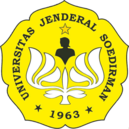Error Analysis of English Sentences Written by Indonesian College Students
Abstract
This study aims to investigate (1) the pattern of the errors made by the Indonesian students (2) the dominant errors (3) the impact of the errors. Designed as qualitative research this research involved 100 students of the second year of the English Department IAIN Pekalongan. The data were collected through an open-ended questionnaire as the instrument of this study. The research findings reveal that (1) the patterns of the errors are spread into eleven types of errors, including verbs, articles, spelling, adjectives, preposition, sentence structure and ordering, word formation, word selection, noun, pronoun, and ambiguous communication; (2) 55.28% of the errors are in terms of subject-verb agreements, the use of articles (9.76 %), and misspelling (8.94%). These findings illustrate that most of the students did not know how to use verb and articles correctly and they need to pay attention to the spelling of the English words; (3) the errors found in the sentences give some ambiguities to the meaning of the sentences.
References
Ananda, R., Gani, S.A., Sahardin, R. (2014). A Study of Error Analysis fromStudents’Sentencesin Writing. Studies In English Language And Education Journal, 1 (2): 81-95.
Bennui, P. (2008). A study of L1 interference in the writing of Thai EFL students. Malaysian Journal of ELTResearch, 4: 72-102
Bumroongthai, G. (2011). An error analysis in English paragragh writing by students of the faculty of liberal arts, Rajamangala University of Technology Phra Nakhon, Research Report, Rajamangala University of Technology Phra Nakhon, Bangkok, Thailand.
Chandler, D. (2003). The Act of Writing: A Media Theory Approach. Prifysgol Cymru Aberystwyth: University of Wales
Corder, S. P. (1981). Error Analysis and Interlanguage. Oxford: Oxford University Press.
Crystal, D. (1999). The penguin dictionary of language. London: Penguin.
Dulay, H. C., Burt, M.K., Krashen, S.D. (1982). Language two. New York: Oxford University Press.
Hammil, Donald D. (1975). Teaching Children with Learning and Behaviour Problems. Boston: Allyn and Bascon.
Hengwichitkul, L. (2006). An analysis of errors in English abstracts translated by Thaiuniversity graduate students. Unpublished Master Thesis, Srinakharinwirot University,Bangkok, Thailand.
Herdiansyah, H. (2012). Metodologi Penelitian Kualitatif untuk Ilmu-Ilmu Sosial. Jakarta: Salemba Humanika
Heydari, P. & Bagheri, M. S. (2012). Error analysis: Sources of L2 learners’ errors. Theory and Practice in Language Studies, 2(8): 1583-1589.
Hinnon, A. (2004). Common errors in English writing and suggested solutions of Thai university students. 31(2): 165-180.
Huang, S. J. (2006). A case study of EFL students’ writing errors on a web-based writing program. Paper presented at International Conference & Workshop on TEFL and Applied Linguistics, Ming ChuanUniversity, China.
James, C. (1998). Errors in language learning and use: Exploring error analysis. New York: Routledge.
Jenwitheesuk, T. (2009). A study of persisted syntactic errors in writing of the 3rd year students of English for international communication program. Paper presented at International Conference on the Role of University in Hands-on Education, Rajamangala University of Technology Lanna, Thailand.
Kaweera, Ch. (2013). Writing error: A review of interlingual and intralingual interference in EFL context, English Language Teaching, 6(7), 9-18.
Khansir, A. A. (2013). Error analysis and second language writing. Theory and Practice in Language Studies, 3(2): 363-370.
Moleong, L. J. (1998). Metodologi Penelitian Kualitatif. Bandung: PT. Remaja Rosdakarya
Mardalis. (2003). Metode Penelitian. Jakarta: Bumi Aksara
Mohammad, S., & Bahrami, A. (2018). An error analysis of journal papers written by Persian authors. In H. Groth (Ed.). Cogent Arts & Humanities, 5:1.
Mungungu, S. S. (2010). Error analysis: Investigating the writing of ESL Namibian learners. Master Thesis, University of South Africa, Pretoria.
Richards, J. C. (1974). Error analysis: Perspectives on second language acquisition. London: Longman.
Runkati, K. (2013). Organizational patterns and common mistakes in English researchabstracts. Unpublished Master Thesis, Prince of Songkla University, Songkhla,Thailand.
Sari, D. (2019). An Error Analysis on Student’s Translation Text. Eralingua: Jurnal Pendidikan Bahasa Asing dan Sastra, 3:10.26858/eralingua.v3i2.8658.
Sermsook, K., Liamnimitr, J., Pochakorn, R. (2017). An Analysis of Errors inWritten English Sentences: A Case Study of Thai EFL Students. English LanguageTeaching Journal, 10 (3)
Surachmad, W. (1982). Pengantar Penelitian Ilmiah. Bandung: Tarsito
Wahyuni, S. (2014). Error Analysis of Student’sFree Writing (A Descriptive Study at theEnglish Department of STKIP Bina Bangsa). STKIP Bina Bangsa Getsempena: Getsempena English Education Journal, 1 (2).
Authors who publish with Jurnal Ilmiah Lingua Idea agree to the following terms:
- Authors retain copyright and grant the journal right of first publication with the work simultaneously licensed under a Creative Commons Attribution License (CC BY-SA 4.0) that allows others to share the work with an acknowledgment of the work's authorship and initial publication in this journal.
- Authors are able to enter into separate, additional contractual arrangements for the non-exclusive distribution of the journal's published version of the work (e.g., post it to an institutional repository or publish it in a book), with an acknowledgment of its initial publication in this journal.
- Authors are permitted and encouraged to post their work online (e.g., in institutional repositories or on their website) prior to and during the submission process, as it can lead to productive exchanges, as well as earlier and greater citation of published work.





















.png)






